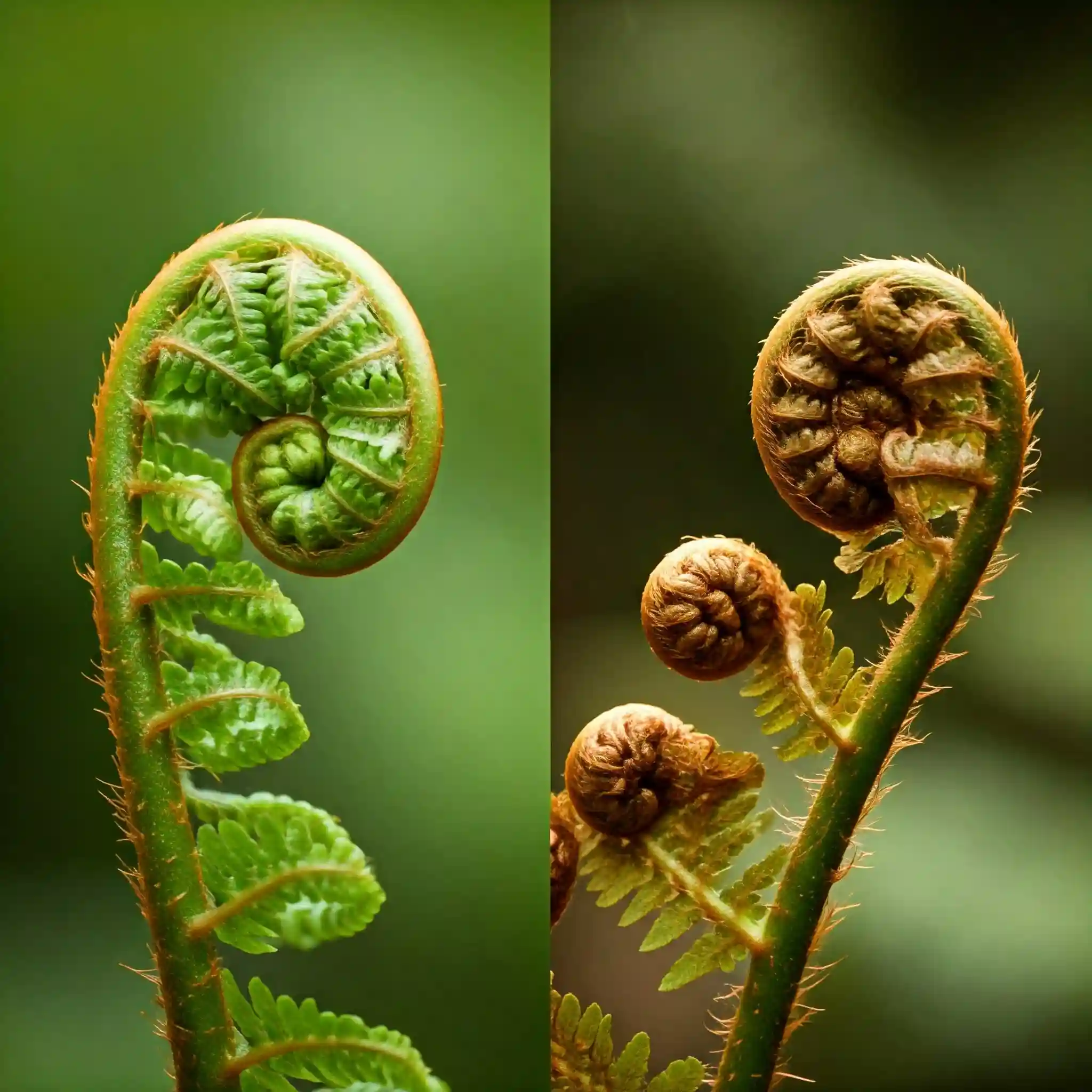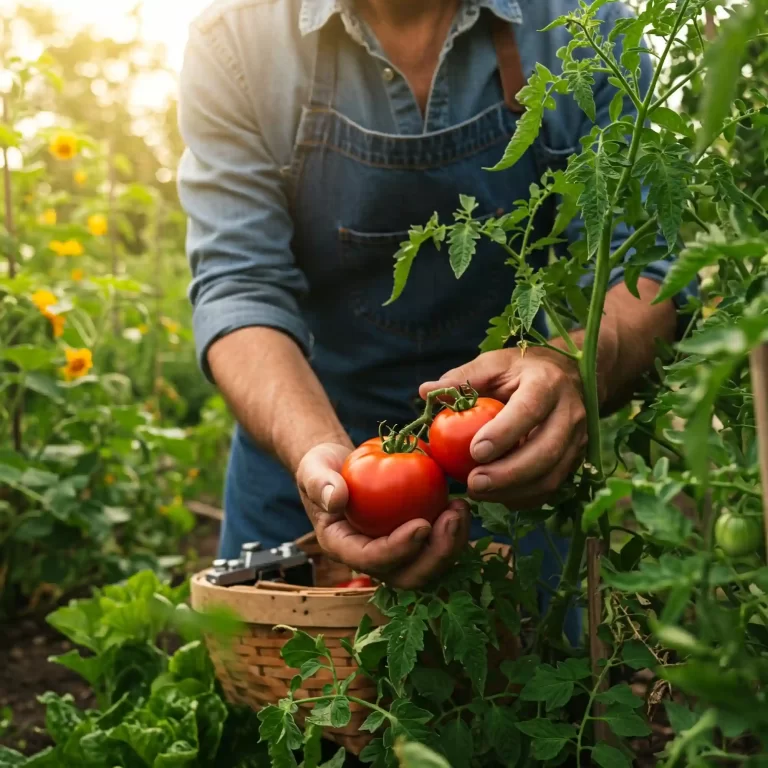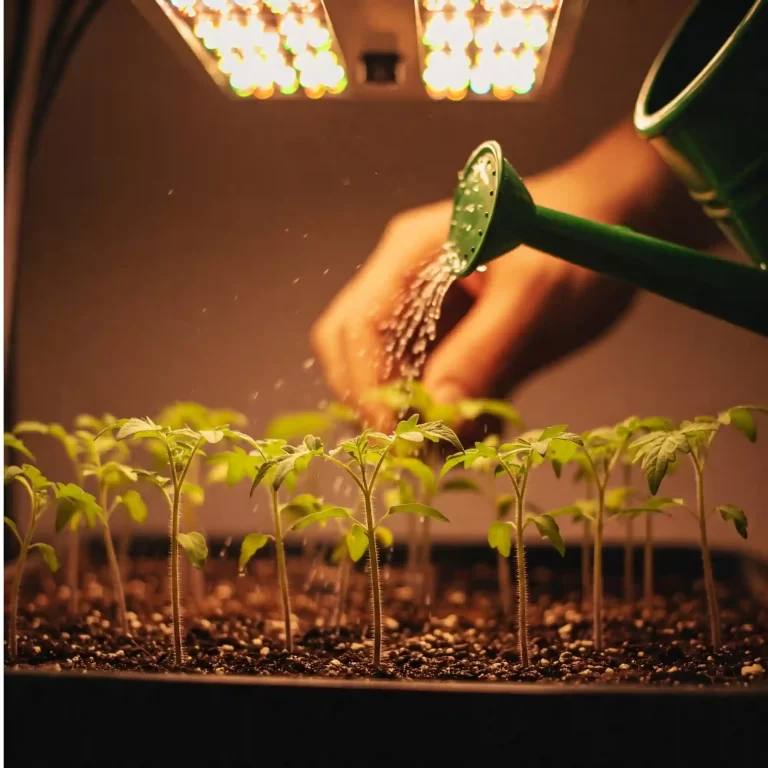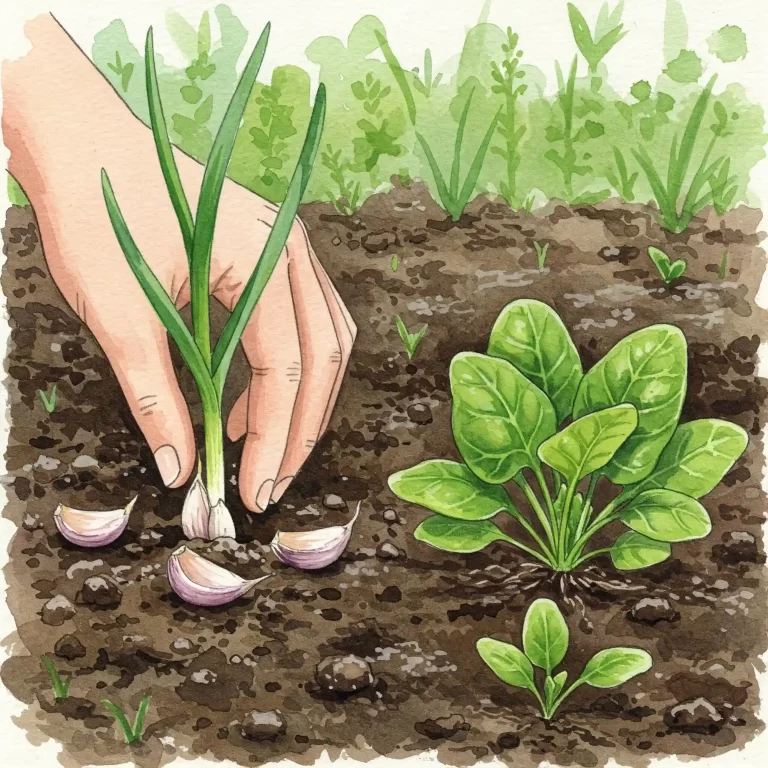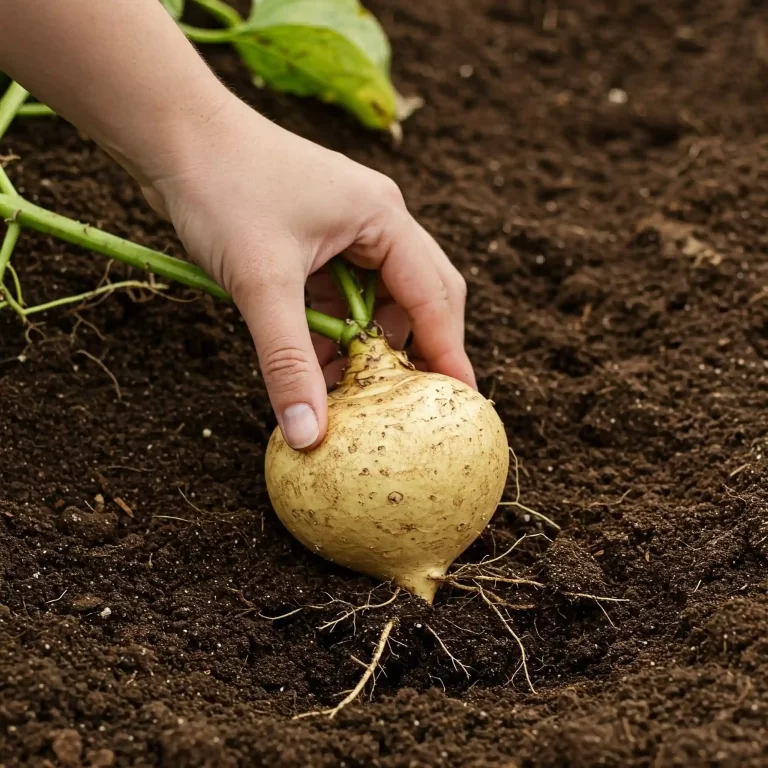Are you tired of the same old vegetables in your garden? Do you crave unique, seasonal flavors that connect you to nature? I understand that feeling. I’ve spent years exploring the world of edible plants, and I’ve discovered a true gem: the fiddlehead. Many gardeners find themselves stuck in a rut, planting the same familiar crops year after year. This can lead to a sense of monotony and a lack of excitement in the garden. You might be looking for something new to cultivate, something that adds a touch of wildness to your plate. If you’re seeking a unique and rewarding gardening experience, I have the perfect solution: learning how to grow fiddleheads. This comprehensive guide will walk you through everything you need to know about how to grow fiddleheads vegetable, from identifying the right ferns to harvesting and preparing these delicious spring treats. You’ll discover how to cultivate these fascinating plants in your own backyard, bringing a taste of the forest to your table.
Understanding Fiddleheads: More Than Just a Pretty Frond
Fiddleheads, those tightly coiled young fronds of certain fern species, are a true sign of spring. I find them absolutely fascinating. They represent the nascent stage of a fern’s growth, a delicate spiral packed with potential. But not all ferns produce edible fiddleheads, and it’s crucial to be able to distinguish between safe and potentially harmful varieties. This is paramount for your safety and well-being.
Botanically speaking, fiddleheads are the unfurled fronds of young ferns, still tightly coiled like the scroll of a violin (hence the name). They emerge from the ground in early spring, signaling the start of the foraging season for many wild food enthusiasts.
The most commonly consumed and cultivated fiddlehead comes from the Ostrich Fern (Matteuccia struthiopteris). I highly recommend starting with this variety if you’re new to growing fiddleheads. It’s easily identifiable by its smooth, deep green stalks and the distinctive U-shaped groove on the inside of the stem. The Ostrich Fern also grows in a distinctive vase-like shape, making it easy to spot in the wild or in a garden setting.
However, it’s absolutely vital to avoid the Bracken Fern (Pteridium aquilinum). This fern contains carcinogens and is not safe to eat. Bracken fern fiddleheads are hairy and lack the smooth stem and deep groove of the Ostrich Fern. This distinction can save you from a very unpleasant experience.
Here’s a simple comparison to help you differentiate:
Fiddlehead Identification
| Feature | Ostrich Fern (Edible) | Bracken Fern (Toxic) |
| Stem | Smooth, deep green, with a U-shaped groove | Hairy, no groove |
| Shape | Vase-like | More spread out |
| Overall Appearance | Smooth | Coarse |
Beyond their unique taste and texture, fiddleheads offer some nutritional benefits. They are a good source of:
- Vitamins: Vitamin A, Vitamin C, and some B vitamins.
- Minerals: Iron, potassium, and manganese.
- Antioxidants: Which help protect your cells from damage.
- Omega-3 and Omega-6 fatty acids: These are important for heart health.
However, it’s essential to remember that fiddleheads must be cooked properly to eliminate any naturally occurring toxins. I’ll cover this in detail in the preparation section.
I’ve found that understanding the botany of fiddleheads deepens my appreciation for them. It’s not just about eating a tasty vegetable; it’s about connecting with the natural world and understanding the life cycle of these fascinating plants. You will appreciate the process more when you understand the plant.
I believe that by understanding the fundamentals of fiddlehead identification and their nutritional value, you’re well on your way to successfully growing and enjoying these spring delicacies. This deeper knowledge will help you avoid any pitfalls and fully appreciate the process.
How to Plant Fiddleheads: Setting the Stage for Spring Harvests
I’ve learned that successfully growing any plant starts with understanding its natural environment. Fiddleheads thrive in conditions that mimic their native woodland habitat. You’ll want to provide them with:
- Shade or Partial Shade: Fiddleheads prefer dappled sunlight or shade. Avoid planting them in areas that receive direct sunlight for extended periods, as this can scorch their delicate fronds.
- Moist, Well-Draining Soil: The soil should retain moisture but not become waterlogged. Good drainage is essential to prevent root rot. I recommend amending your soil with organic matter, such as compost or well-rotted manure, to improve its moisture-holding capacity and drainage.
- Rich in Organic Matter: Fiddleheads thrive in soil that is rich in organic matter. This provides them with the nutrients they need to grow and flourish.
Propagation: Two Paths to a Fiddlehead Patch
There are two main ways to propagate fiddleheads: from spores or by dividing rhizomes. I’ve found that dividing rhizomes is the easier and more reliable method for most home gardeners.
- From Spores (More Challenging): Growing ferns from spores is a fascinating process, but it requires patience and specific conditions. You’ll need to collect spores from mature ferns, sow them in a sterile medium, and maintain high humidity levels. This method can take several months or even years to produce mature plants.
- By Dividing Rhizomes (Easier and More Common): Rhizomes are the horizontal underground stems of ferns. Dividing them is a simple way to propagate new plants. Here’s how I do it:
- In early spring or fall, carefully dig up a mature fern clump.
- Gently separate the rhizomes into sections, ensuring each section has at least one growing point (bud).
- Plant the rhizome sections in prepared soil, about 2-3 inches deep.
- Water thoroughly and keep the soil moist until new growth appears.
Planting Rhizomes: A Step-by-Step Guide
- Choose a Location: Select a shady or partially shaded area with moist, well-draining soil.
- Prepare the Soil: Amend the soil with organic matter, such as compost or well-rotted manure.
- Dig a Hole: Dig a hole that is slightly larger than the rhizome section.
- Plant the Rhizome: Place the rhizome section in the hole, ensuring the growing point is facing upwards.
- Cover with Soil: Fill the hole with soil and gently firm it around the rhizome.
- Water Thoroughly: Water the newly planted rhizome thoroughly.
Suitable Companion Plants: A Harmonious Garden
I’ve noticed that certain plants create a harmonious environment for fiddleheads. Consider planting them alongside:
- Hostas
- Astilbe
- Bleeding hearts
- Other shade-loving perennials
These plants share similar growing requirements and create a beautiful, textured garden.
By following these planting and propagation tips, you’ll be well on your way to establishing a thriving fiddlehead patch in your garden. I’ve found that the key is to mimic their natural habitat as closely as possible. This will ensure that your fiddleheads thrive and provide you with a bountiful harvest for years to come.
How to Care for Fiddleheads: Nurturing Your Fern Patch
Once your fiddleheads are planted, consistent care is key to ensuring a healthy and productive patch. From my experience, providing the right conditions and addressing any potential issues promptly will lead to a bountiful harvest year after year. Here are some essential care tips I’ve found helpful:
- Watering Needs: Maintaining the Right Moisture Balance: Fiddleheads thrive in consistently moist soil, but they don’t tolerate waterlogging. I recommend watering them regularly, especially during dry periods. The key is to keep the soil moist to the touch but not soggy. You can check the moisture level by inserting your finger into the soil about an inch deep. If it feels dry, it’s time to water.
- Mulching Benefits: A Natural Way to Protect and Nourish: Applying a layer of mulch around your fiddleheads can provide several benefits. Mulch helps to retain moisture in the soil, suppress weeds, and add organic matter as it decomposes. I prefer using natural mulches like shredded bark, wood chips, or straw. Apply a 2-3 inch layer of mulch around the base of the plants, being careful not to pile it up against the stems.
- Fertilizing: Providing Essential Nutrients: Fiddleheads generally don’t require heavy fertilization, especially if you’ve amended the soil with plenty of organic matter. However, if you notice that your plants are not growing vigorously, you can apply a balanced organic fertilizer in early spring. I recommend using a fertilizer that is specifically formulated for ferns or a general-purpose organic fertilizer diluted to half strength.
- Pest and Disease Management: Keeping Your Fiddleheads Healthy: Fiddleheads are generally resistant to pests and diseases. However, there are a few potential issues to watch out for:
- Slugs and Snails: These pests can sometimes feed on young fiddleheads. You can control them by handpicking them or using organic slug and snail baits.
- Fungal Diseases: In humid conditions, fungal diseases like rust or leaf spot can occur. You can prevent these diseases by ensuring good air circulation and avoiding overhead watering. If you notice any signs of disease, you can apply an organic fungicide.
By following these care tips, you can create an ideal environment for your fiddleheads to thrive. Consistent watering, mulching, and occasional fertilization will help to ensure a healthy and productive patch. And by monitoring for pests and diseases, you can prevent any major problems from developing. With a little attention and care, you can enjoy a bountiful harvest of fiddleheads for many years to come.
How to Harvest Fiddleheads: Timing is Everything
I’ve learned that harvesting fiddleheads at the right time is crucial for both flavor and sustainability. You see, these young ferns are only edible for a short period in the spring, when they’re still tightly coiled. If you wait too long, they’ll unfurl into mature fronds, becoming tough and unpalatable. So, timing is everything!
When to Harvest: Catching the Fiddleheads at Their Peak
The harvesting window for fiddleheads is typically in early spring, as soon as the snow melts and the new growth emerges. This can vary depending on your geographic location and the specific weather conditions each year. I’ve found that the best time to harvest is when the fiddleheads are:
- Tightly Coiled: The fronds should be still tightly curled, resembling the scroll of a violin or the head of a fiddle (hence the name).
- A Few Inches Tall: The fiddleheads should be a few inches tall, but not yet fully unfurled.
- Bright Green: Look for fiddleheads with a vibrant green color. Avoid any that are brown, wilted, or show signs of damage.
Correct Harvesting Techniques: Ensuring Future Growth
When harvesting fiddleheads, it’s essential to do so sustainably to ensure the fern patch continues to thrive for years to come. Here are some guidelines I follow:
- Harvest Sparingly: Never harvest all the fiddleheads from a single plant. Leave at least two-thirds of the fronds intact to allow the fern to continue growing.
- Snap, Don’t Cut: Gently snap off the fiddlehead close to the base of the plant. Avoid cutting them with a knife, as this can damage the plant.
- Choose the Right Size: Select fiddleheads that are about 1-2 inches in diameter. Avoid harvesting smaller ones, as they may not have developed their full flavor.
Sustainable Harvesting Practices: Protecting the Future of Fiddleheads
Sustainable harvesting is crucial for ensuring that fiddleheads remain a part of our natural landscape for generations to come. Here are some practices I encourage you to follow:
- Harvest from Established Patches: Focus on harvesting from established fern patches that have a large number of plants.
- Avoid Over-Harvesting: Never take more than half of the fiddleheads from any given patch.
- Rotate Harvesting Areas: If you’re harvesting from multiple patches, rotate which ones you harvest from each year to allow them to recover.
- Respect Private Property: Always obtain permission before harvesting fiddleheads on private land.
By following these harvesting guidelines, you can enjoy the delicious taste of fiddleheads while also protecting the health and sustainability of these unique plants. It’s a win-win situation for both you and the environment.
How to Prepare Fiddleheads for Cooking: Safety First!
I cannot stress enough how important proper preparation is when it comes to fiddleheads. Unlike many other vegetables, fiddleheads contain naturally occurring toxins that can cause gastrointestinal upset if not properly handled. You absolutely must take the necessary steps to clean and cook them thoroughly. This is not a step you can skip.
Cleaning Fiddleheads: Removing Debris and Scales
The first step in preparing fiddleheads is to clean them thoroughly. This involves removing any brown, papery scales that cling to the coiled fronds and washing away any dirt or debris. Here’s the method I use:
- Rinse Thoroughly: Place the fiddleheads in a colander and rinse them under cold running water.
- Remove Scales: Gently rub the fiddleheads with your fingers to remove the papery scales. You may need to use a small brush or cloth to remove stubborn scales.
- Repeat: Repeat the rinsing and scaling process until the water runs clear and the fiddleheads are free of debris.
Cooking Fiddleheads: Neutralizing the Toxins
Once the fiddleheads are cleaned, they must be cooked thoroughly to neutralize the naturally occurring toxins. The recommended cooking methods are boiling or steaming. Here’s how I do it:
- Boiling:
- Place the cleaned fiddleheads in a pot of boiling water.
- Boil for 10-12 minutes, or until the fiddleheads are tender-crisp.
- Drain the fiddleheads and discard the cooking water.
- Steaming:
- Place the cleaned fiddleheads in a steamer basket over boiling water.
- Steam for 10-15 minutes, or until the fiddleheads are tender-crisp.
Important Safety Considerations:
- Never eat raw or undercooked fiddleheads. This can cause nausea, vomiting, diarrhea, and other gastrointestinal symptoms.
- Always discard the cooking water. This water contains the toxins that have been leached out of the fiddleheads during cooking.
- Cook fiddleheads in small batches. Overcrowding the pot can prevent them from cooking evenly.
Cooking Methods and Recipe Ideas: From Simple to Gourmet
Once your fiddleheads are properly cooked, you can enjoy them in a variety of ways. Here are a few of my favorite cooking methods and recipe ideas:
- Sautéed: Sauté cooked fiddleheads in butter or olive oil with garlic and a squeeze of lemon juice.
- Steamed: Serve steamed fiddleheads with a simple vinaigrette or a dollop of hollandaise sauce.
- Pickled: Pickle fiddleheads for a tangy and flavorful condiment.
- In Salads: Add cooked and cooled fiddleheads to salads for a unique texture and flavor.
- In Pasta Dishes: Toss cooked fiddleheads with pasta, garlic, and olive oil for a delicious spring-inspired meal.
Nutritional Information
Fiddleheads are not only delicious but also nutritious. They are a good source of:
- Antioxidants: These compounds help protect your cells from damage.
- Omega-3 and Omega-6 Fatty Acids: These are essential fatty acids that are important for heart health.
- Vitamins and Minerals: Fiddleheads contain vitamins A and C, as well as several minerals, including potassium, iron, and manganese.
By following these cleaning and cooking instructions, you can safely enjoy the unique flavor and nutritional benefits of fiddleheads. I find that the slight bitterness of the fiddleheads pairs well with a variety of flavors, making them a versatile ingredient in many dishes.
Growing Fiddleheads in Containers: A Guide for Small Spaces
I understand that not everyone has the luxury of a large garden or a woodland area to grow fiddleheads. But don’t worry, you can still enjoy these spring delicacies even if you have limited space. I’ve successfully grown fiddleheads in containers on my balcony, and I’m here to share my tips with you.
Choosing the Right Container: Providing Ample Space for Growth
When growing fiddleheads in containers, it’s essential to choose a pot that is large enough to accommodate their spreading rhizomes. I recommend using a container that is at least 18 inches in diameter and 12 inches deep. This will provide ample space for the ferns to grow and spread.
Preparing the Potting Mix: Mimicking Their Natural Habitat
Fiddleheads prefer moist, well-draining soil that is rich in organic matter. To create the ideal potting mix, I combine equal parts:
- Potting Soil: This provides a good base for the mix.
- Compost: This adds organic matter and nutrients.
- Perlite or Vermiculite: This improves drainage and aeration.
Planting Fiddleheads in Containers: A Step-by-Step Guide
- Choose a Container: Select a pot that is at least 18 inches in diameter and 12 inches deep.
- Prepare the Potting Mix: Combine equal parts potting soil, compost, and perlite or vermiculite.
- Plant the Rhizome: Plant the rhizome sections about 2-3 inches deep in the potting mix.
- Water Thoroughly: Water the newly planted rhizomes thoroughly.
Caring for Container-Grown Fiddleheads: Maintaining the Right Conditions
Caring for fiddleheads in containers is similar to caring for those grown in the ground. Here are a few key considerations:
- Watering: Water regularly to keep the potting mix moist but not soggy.
- Fertilizing: Fertilize with a balanced organic fertilizer in early spring.
- Location: Place the container in a shady or partially shaded location.
Harvesting Container-Grown Fiddleheads: Enjoying Your Urban Harvest
Harvesting fiddleheads from containers is the same as harvesting them from the ground. Remember to harvest sparingly and sustainably.
By following these tips, you can successfully grow fiddleheads in containers, even if you have limited space. It’s a great way to enjoy these spring delicacies no matter where you live.
Growing Fiddleheads in Zone 5: A Guide for Beginners
I know that many of you are eager to start growing fiddleheads, but you might be wondering if they can thrive in your specific climate. I’m here to tell you that with the right care and attention, you can successfully grow fiddleheads even in colder regions like Zone 5.
Understanding Zone 5 Climate: Cold Winters and Warm Summers
Zone 5 is characterized by cold winters with average minimum temperatures ranging from -20°F to -10°F (-29°C to -23°C). Summers in Zone 5 are typically warm, with average high temperatures ranging from 70°F to 80°F (21°C to 27°C).
Choosing the Right Fiddlehead Variety: Cold-Hardy Options
When growing fiddleheads in Zone 5, it’s essential to choose a variety that is known for its cold hardiness. The Ostrich Fern (Matteuccia struthiopteris) is a great option, as it can tolerate temperatures down to -30°F (-34°C).
Planting Fiddleheads in Zone 5: Timing and Location
The best time to plant fiddleheads in Zone 5 is in early spring, as soon as the ground thaws. This will give them plenty of time to establish before the hot summer months.
When choosing a location for your fiddleheads, keep in mind that they prefer shady or partially shaded areas with moist, well-draining soil. Avoid planting them in areas that receive direct sunlight for extended periods, as this can scorch their delicate fronds.
Caring for Fiddleheads in Zone 5: Winter Protection
In Zone 5, it’s essential to provide winter protection for your fiddleheads to prevent them from being damaged by the cold temperatures. Here are a few tips:
- Mulch: Apply a thick layer of mulch around the base of the plants in late fall. This will help to insulate the roots and protect them from freezing temperatures.
- Snow Cover: If you live in an area that receives heavy snowfall, the snow cover can provide additional insulation for your fiddleheads.
Harvesting Fiddleheads in Zone 5: A Springtime Treat
You can harvest fiddleheads in Zone 5 in early spring, as soon as the new growth emerges. Remember to harvest sparingly and sustainably to ensure the fern patch continues to thrive for years to come.
By following these tips, you can successfully grow fiddleheads in Zone 5 and enjoy their unique flavor and texture each spring.
How to Prepare Fiddleheads for Cooking: A Culinary Adventure
I believe that the true magic of fiddleheads is revealed in the kitchen. Their unique flavor and texture can be transformed into culinary masterpieces with just a few simple steps. But before we dive into the recipes, it’s crucial to understand the importance of proper cleaning and cooking.
Cleaning Fiddleheads: The Foundation of Flavor
I’ve learned that the key to delicious fiddleheads lies in thorough cleaning. These young ferns often have brown, papery scales clinging to their coiled fronds, which can affect their taste and texture. Here’s my tried-and-true cleaning method:
- Rinse Thoroughly: Place the fiddleheads in a colander and rinse them under cold running water.
- Remove Scales: Gently rub the fiddleheads with your fingers to remove the papery scales. You may need to use a small brush or cloth to remove stubborn scales.
- Repeat: Repeat the rinsing and scaling process until the water runs clear and the fiddleheads are free of debris.
Cooking Fiddleheads: Unlocking Their Unique Flavor
Once your fiddleheads are cleaned, it’s time to cook them. This is a crucial step, as raw or undercooked fiddleheads can cause gastrointestinal upset. Here are the recommended cooking methods:
- Boiling:
- Place the cleaned fiddleheads in a pot of boiling water.
- Boil for 10-12 minutes, or until the fiddleheads are tender-crisp.
- Drain the fiddleheads and discard the cooking water.
- Steaming:
- Place the cleaned fiddleheads in a steamer basket over boiling water.
- Steam for 10-15 minutes, or until the fiddleheads are tender-crisp.
Important Safety Considerations:
- Never eat raw or undercooked fiddleheads. This can cause nausea, vomiting, diarrhea, and other gastrointestinal symptoms.
- Always discard the cooking water. This water contains the toxins that have been leached out of the fiddleheads during cooking.
- Cook fiddleheads in small batches. Overcrowding the pot can prevent them from cooking evenly.
Cooking Methods and Recipe Ideas: From Simple to Gourmet
Now that your fiddleheads are properly cooked, you can explore their culinary versatility. Here are a few of my favorite cooking methods and recipe ideas:
- Sautéed: Sauté cooked fiddleheads in butter or olive oil with garlic and a squeeze of lemon juice.
- Steamed: Serve steamed fiddleheads with a simple vinaigrette or a dollop of hollandaise sauce.
- Pickled: Pickle fiddleheads for a tangy and flavorful condiment.
- In Salads: Add cooked and cooled fiddleheads to salads for a unique texture and flavor.
- In Pasta Dishes: Toss cooked fiddleheads with pasta, garlic, and olive oil for a delicious spring-inspired meal.
Nutritional Information
Fiddleheads are not only delicious but also nutritious. They are a good source of:
- Antioxidants: These compounds help protect your cells from damage.
- Omega-3 and Omega-6 Fatty Acids: These are essential fatty acids that are important for heart health.
- Vitamins and Minerals: Fiddleheads contain vitamins A and C, as well as several minerals, including potassium, iron, and manganese.
By following these cleaning and cooking instructions, you can safely enjoy the unique flavor and nutritional benefits of fiddleheads. I find that the slight bitterness of the fiddleheads pairs well with a variety of flavors, making them a versatile ingredient in many dishes.
Frequently Asked Questions About Growing Fiddleheads
I often get asked a lot of questions about growing fiddleheads, so I’ve compiled some of the most common ones here to help you on your fiddlehead-growing journey.
How to grow ostrich fern fiddleheads in a home garden?
Growing ostrich fern fiddleheads in your home garden is entirely feasible if you mimic their natural woodland habitat. Choose a shady or partially shaded location with moist, well-draining soil rich in organic matter. Plant rhizomes in early spring or fall, ensuring each section has a growing point. Water regularly, especially during dry periods, and mulch to retain moisture and suppress weeds.
What is the best way to grow fiddleheads from spores at home?
Growing from spores is more challenging and requires patience. Collect spores from mature fronds and sow them on a sterile medium in a humid environment. This can take several months to years to produce mature plants. Dividing rhizomes is a much faster and more reliable method for home gardeners.
How to grow fiddleheads in shade with moist soil conditions?
Fiddleheads thrive in these conditions. Aim for a location that receives dappled sunlight or shade for most of the day. The soil should be consistently moist but not waterlogged. Amend the soil with compost or other organic matter to improve its water-holding capacity and drainage.
How to safely grow and harvest fiddleheads for cooking?
Safety is paramount. Ensure you are growing and harvesting only Ostrich ferns, identifiable by their smooth stems and U-shaped groove. Harvest when the fiddleheads are tightly coiled and a few inches tall, leaving at least two-thirds of the fronds intact. Always cook fiddleheads thoroughly by boiling or steaming to eliminate toxins.
What is a step-by-step guide on how to grow fiddleheads organically?
- Choose a shady spot with moist, well-draining soil.
- Amend the soil with organic compost and well-rotted manure.
- Plant rhizomes in early spring or fall.
- Water regularly and mulch with organic materials like wood chips or straw.
- Fertilize with a balanced organic fertilizer in early spring if needed.
- Control pests (like slugs and snails) with organic methods like handpicking or organic baits.
- Harvest sustainably, leaving enough fronds for the plant to thrive.
How to grow fiddleheads in containers for small spaces?
Choose a large container (at least 18 inches in diameter and 12 inches deep) with drainage holes. Use a potting mix of equal parts potting soil, compost, and perlite or vermiculite. Plant rhizomes a few inches deep, water regularly, and place the container in a shady location.
How to grow fiddleheads without using any chemical fertilizer?
You can successfully grow fiddleheads without chemical fertilizers by focusing on soil health. Amend the soil with plenty of compost and well-rotted manure before planting. This will provide the necessary nutrients. You can also use organic fertilizers like compost tea or worm castings as needed.
